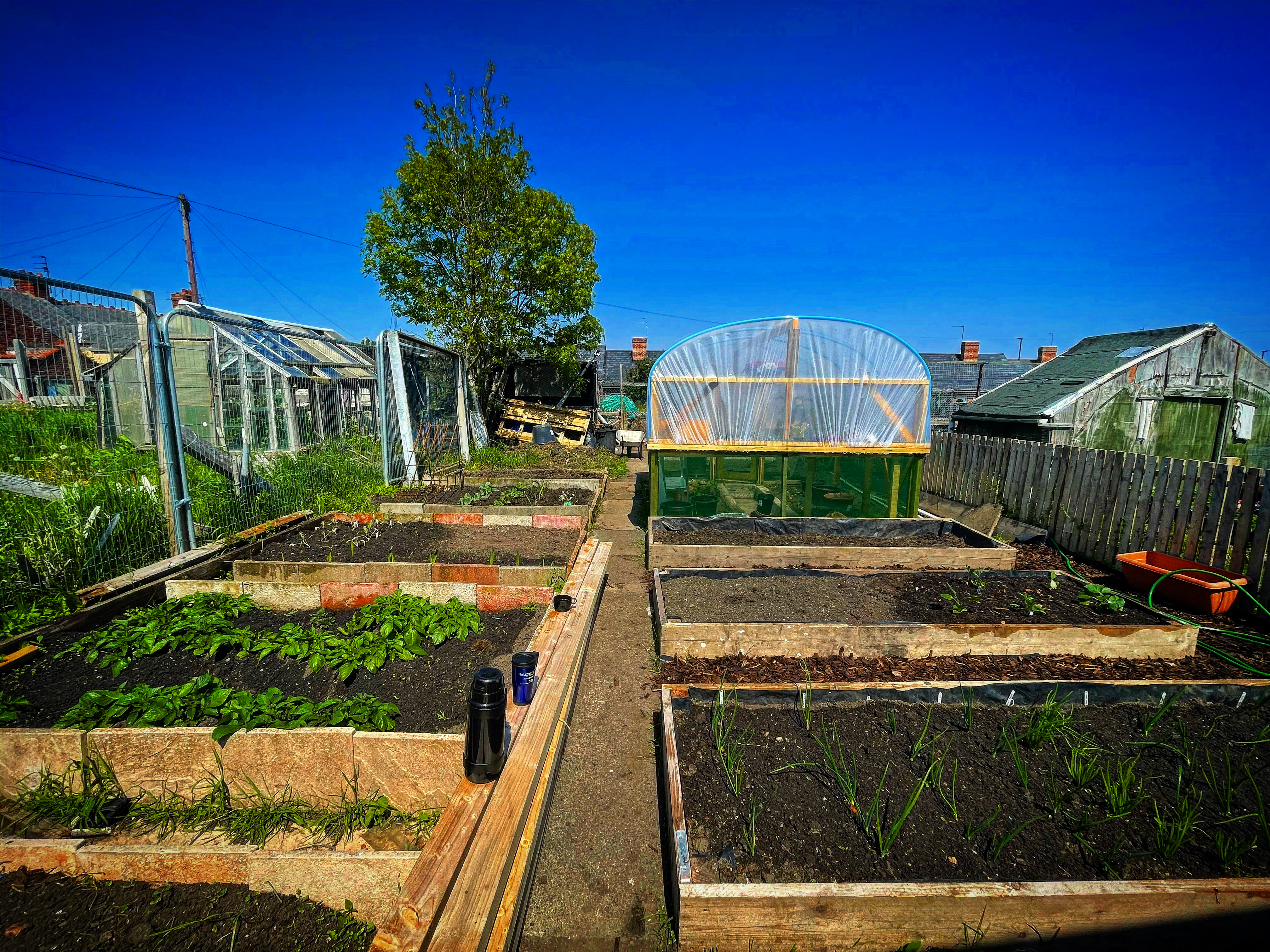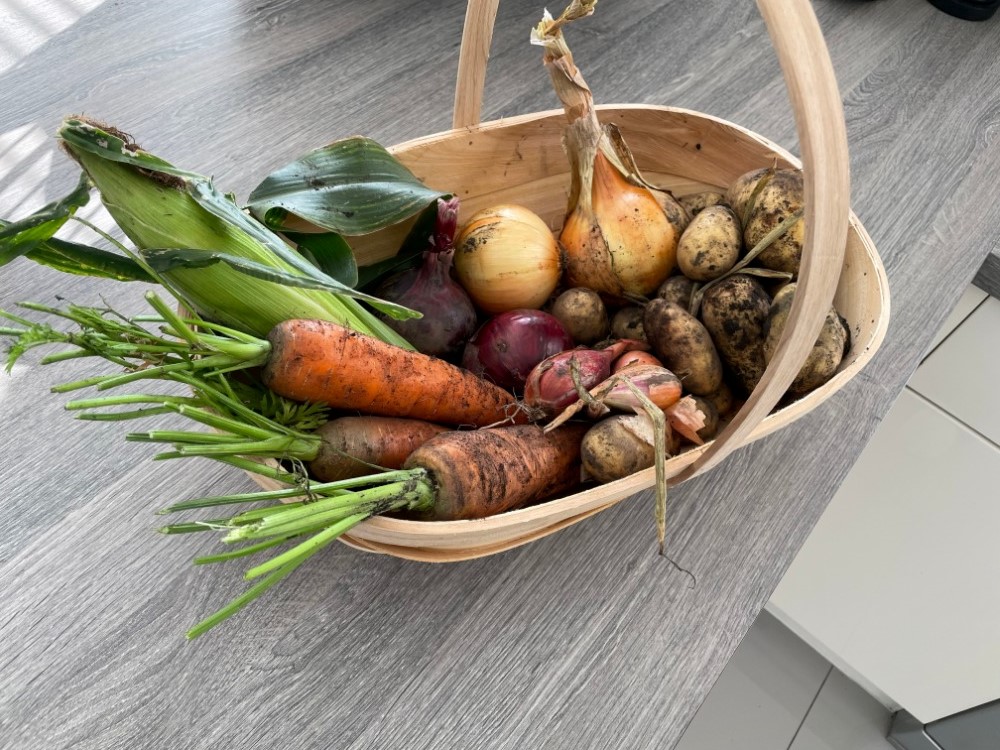
Table of Contents
7 Steps To Starting Your Own Allotment

Are you looking to start your own allotment or community garden? They are a great way to get into gardening. They offer the opportunity to grow your own food, as well as connect with other gardeners in your area. If you’re thinking of starting an allotment of your own, here are some tips to help you get started.
What is an allotment and what are the benefits of having one?
An allotment is a piece of land set aside by the government to be used for a specific purpose, such as agriculture or forestry. The benefits of having an allotment are many. First, it allows people to produce their own food, which can help to reduce food costs and improve nutrition. Second, it provides a place to relax and get away from the city. Third, it helps to support local businesses and the local economy. Finally, it teaches people about gardening and agriculture, which can help them to become more self-sufficient.
How to find an allotment in your area
There are a few ways that you can find an allotment in your area. One way is to search online. You can also check with your local government or with nonprofit organizations that manage allotments. Another option is to contact a local farm or gardening club and ask if they know of any allotments that are available in the area.
It’s important to do your research before you decide which allotment to apply for. Make sure to read the terms and conditions carefully, and be sure to ask any questions that you have. It’s also a good idea to visit the allotment before you decide to apply. This will give you a chance to see what kind of condition the allotment is in, and it will also allow you to speak with the allotment manager.
How to prepare the land
In order to ensure that your allotment has healthy, fertile soil, you will need to prepare the ground.
The first step is to remove any weeds or grass from the area and then rake away any stones or branches. Next, add about 6 inches of composted manure and/or compost onto the surface of the land. This will help break down large chunks of dirt into smaller pieces. Finally, mix in some organic fertilizer like blood meal or chicken manure with water before adding it to the soil. This should provide enough nutrients for one year’s worth of crops!
Planting vegetables in your allotment
Many people choose to plant vegetables in their allotment.
This is a great way to get fresh, organic produce and also to learn about gardening. There are a few things that you will need to keep in mind when planting vegetables in your allotment. First, you will need to select the right vegetables for your climate and soil type. Second, you will need to prepare the soil properly before planting. Third, you will need to water and fertilize the plants regularly. Finally, you will need to harvest the vegetables when they are ripe.
When selecting vegetables for your allotment, it is important to choose varieties that are suited for your climate and soil type. For example, if you live in a cold climate, you will want to plant cold-hardy vegetables like potatoes, carrots, peas, and lettuce. If you live in a warm climate, you can plant tomatoes, cucumbers, and peppers.
Another factor to consider is the length of time that it takes for certain vegetables to grow. Some vegetables are very short-lived, while others take much longer to grow. For example, some beans can be harvested within 2 months. On the other hand, it will take much longer for tomatoes, carrots, and potatoes to grow.
Caring for your plants in an allotment
To start with, it’s important to water your plants regularly, especially during hot weather. Make sure the soil is damp but not wet – you can test this by sticking your finger in it. Water the soil until it’s saturated but if it’s wet, then don’t water it for a day or two until the top layer dries out a bit.
When watering your plants, try using collected rainwater or tap water that is left sitting out overnight so the chlorine evaporates.
It’s also important to give your plants the right food. Starting your own allotment is a great opportunity to learn about what plants need to stay healthy – for example, tomatoes love feeding on comfrey leaves, while cabbages respond well if they are given ashes from burnt toast or coffee grounds.
Making compost is one of the most important things you can do to maintain your allotment. It’s not difficult, either – all you need to do is collect organic materials (such as vegetable peelings) and layer them up with soil. Leave it for six months or so, then dig it into the soil. This will give your plants the nutrients they need to thrive.
Harvesting vegetables from your allotment
Now that you’ve taken care of your plants in the allotment, it’s time to harvest the vegetables!
1) Harvesting Time:
The best time to harvest most vegetables is early in the morning when the sun isn’t too strong and the dew is still on the leaves. This will help to keep the vegetables fresh. If you are harvesting root vegetables, such as carrots or potatoes, wait until after the first frost has killed off any pests or diseases that may be present on them.
2) Tools for Harvesting:
There are a few tools that you will need in order to harvest your vegetables effectively. A sharp knife or scissors is essential for cutting stems and vines; a bucket or basket is needed for gathering your vegetables, and gardening gloves are useful if the plants you’re harvesting have thorns or other hazardous parts.
3) Storing your Produce:
Some vegetables will last longer than others. Root vegetables, such as potatoes and carrots, can be stored for a few months in a dry place where the temperature is just above freezing. On the other side of things, items such as lettuce and various greens perish quickly and should always be eaten immediately once harvested.
Tips for success when starting your own allotment
In order to have a successful allotment, there are several things you need to keep in mind.
First of all, it’s important that you plant the right type of crops for your allotment. For example, if you live in an area where the soil is heavy and clay-like then plants such as potatoes may not be suitable because they don’t grow well in this kind of environment. Whereas if you live in an area with sandy soil then planting root vegetables like carrots would suit you better. Second, when harvesting your produce it’s vital that you use appropriate tools – a sharp knife or scissors will cut through stems and vines more effectively than hands alone. Also, buckets or baskets are necessary for gathering these vegetables whilst wearing gardening gloves can help to protect you from any thorns or hazardous parts.
Lastly, allotments are a great way to engage in the local community by making friends with your fellow plot owners and establishing an easy rapport with everyone.
If you have any questions about your allotment – what to plant, when to harvest items, how to care for certain vegetables – there are lots of books to help you out with all aspects, including flowers and trees.
Hopefully, these tips will help you have a successful allotment – best of luck!
Starting your own allotment Conclusion
Maintaining a healthy plant or tree at your allotment can be tricky, but it’s important to do so in order to reap the benefits. Pruning plants just after they blossom will encourage them to grow more flowers and fruit. Planting wisely is key, as you should keep any weeds from growing around the plants. You should try and find out which kind of soil each needs before planting; harvesting vegetables at the right time is essential for keeping them fresh; and lastly, storing produce properly is necessary in order to preserve it. With these tips in mind, when you are Starting your own allotment!

